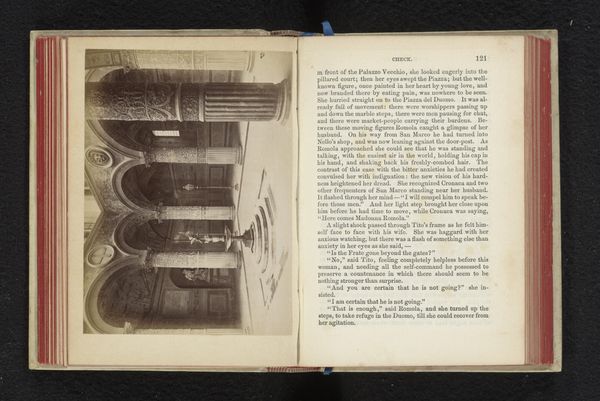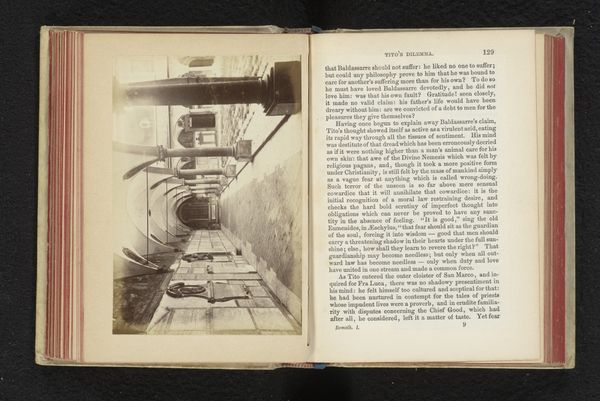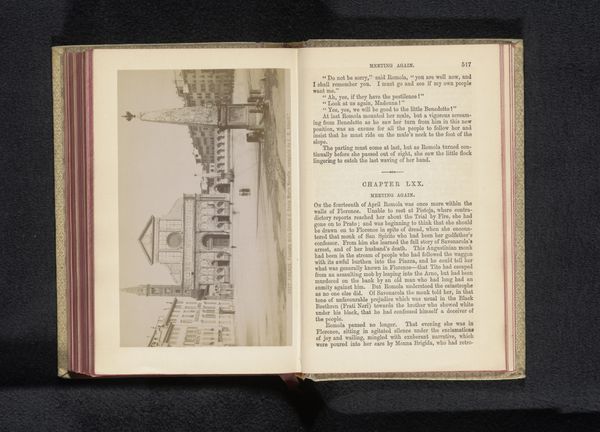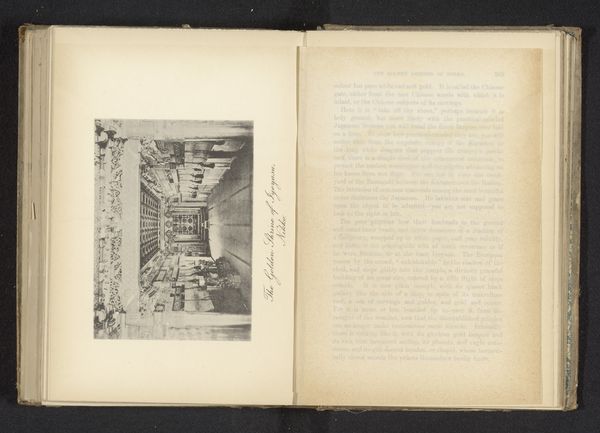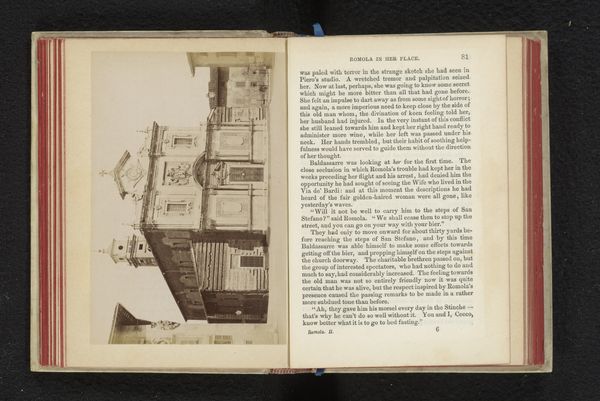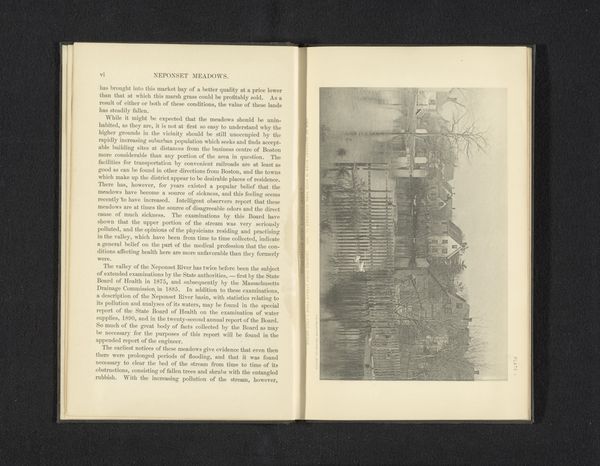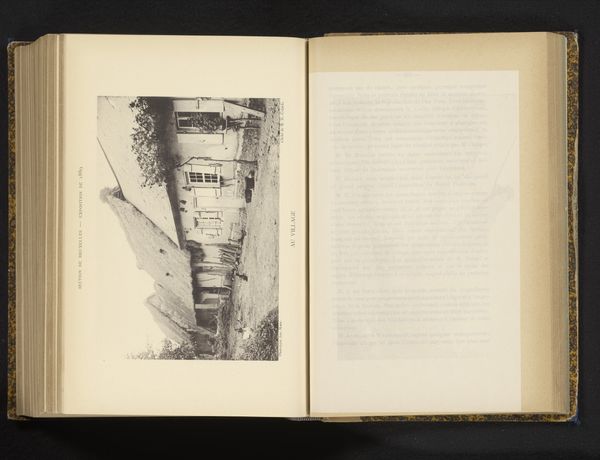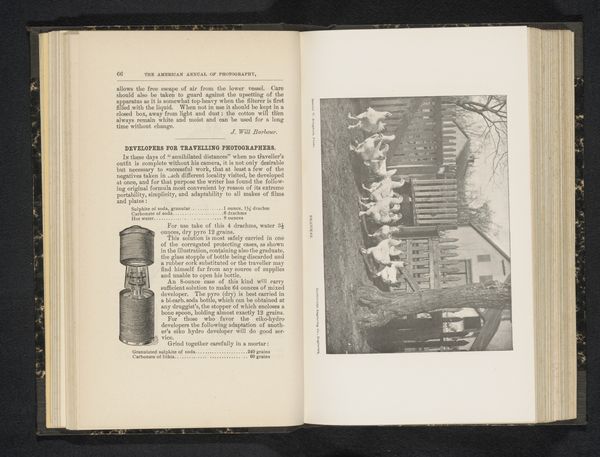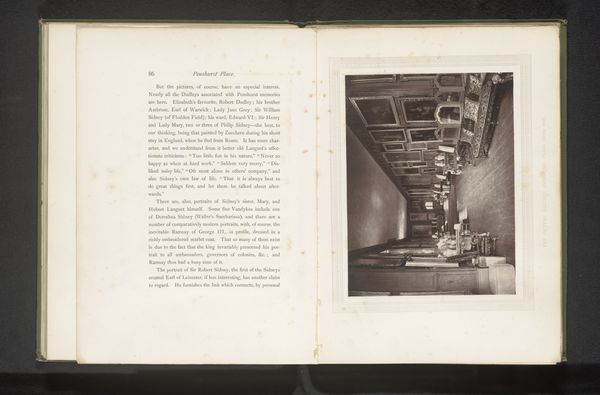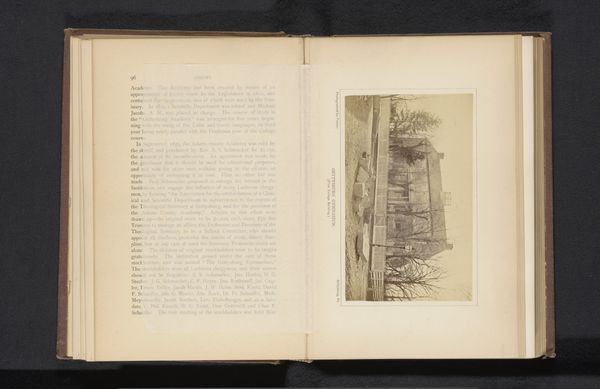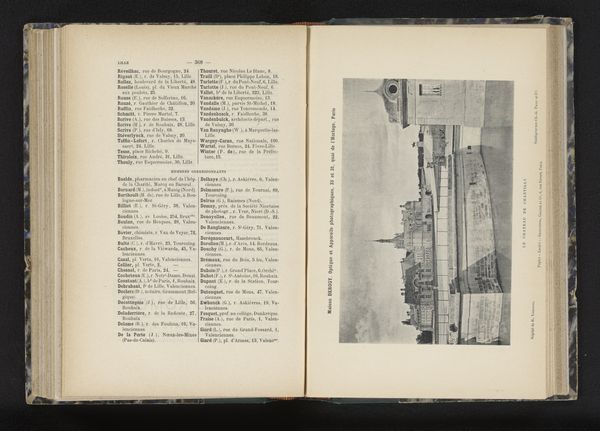
print, photography, gelatin-silver-print, architecture
# print
#
photography
#
ancient-mediterranean
#
gelatin-silver-print
#
cityscape
#
genre-painting
#
architecture
#
realism
Dimensions: height 93 mm, width 142 mm
Copyright: Rijks Museum: Open Domain
Curator: This image presents us with a view of "Binnenplaats van het Bargello, Florence," or the Bargello courtyard, in Florence. It's a gelatin silver print, dating to before 1863, attributed to Giacomo Brogi. Editor: My initial impression is a feeling of compressed grandeur. The perspective pulls me into the shadowed depths, where a strange pattern almost flattens the whole scene and transforms it into a tapestry of architectural forms. Curator: The Bargello, originally a barracks and prison, serves here as a study of civic architecture but one layered with political meaning. Consider what that might mean about representations of state power. The building itself looms large in Florentine history. Editor: Absolutely. But the photograph's graphic qualities really captivate me. Those arches, in particular, suggest the psychological weight of judgment and time. Do you think that Brogi was thinking along those lines when capturing this space? Curator: Brogi was, above all, a commercial photographer catering to tourists. Yet his choices say a lot about the aesthetic trends of his time, and his work reveals much about what aspects of Florence were being marketed. And, in his capture, the photo speaks for an enduring narrative about the glories of the Renaissance and even of more ancient civilizations that predated that historical marker. Editor: The arrangement also brings to mind stagecraft; all of this architectural "scenery" acts as a setting for dramatic actions. There's a curious stillness here. The courtyard seems emptied of people but resonant with the potential for something weighty to take place. I sense a very specific reading of memory. Curator: I think this resonates powerfully with that century's emphasis on both realism in art, yet simultaneously valorizing history. Brogi documented present-day Florence, in order to construct or advance a particular view of history. Photography at this time helped shaped civic identity and consolidated political messages through circulation to wider audiences. Editor: So true. And now, thinking about the composition and lighting together, that contrast helps shape a stage for something epic in scale. These are architectural forms that can hold cultural narratives from centuries ago and those from just a few years earlier as well. This visual continuity almost seems deliberate, a conscious invocation. Curator: Brogi's photograph functions not just as a document but as a piece of propaganda, almost. The print romanticizes Florence’s grand, ancient past to promote a vision for a contemporary, unified Italy under a single political project. Editor: It is all just amazing! To imagine how much of symbolism is in one, relatively simple-looking, photo of a building…
Comments
No comments
Be the first to comment and join the conversation on the ultimate creative platform.
